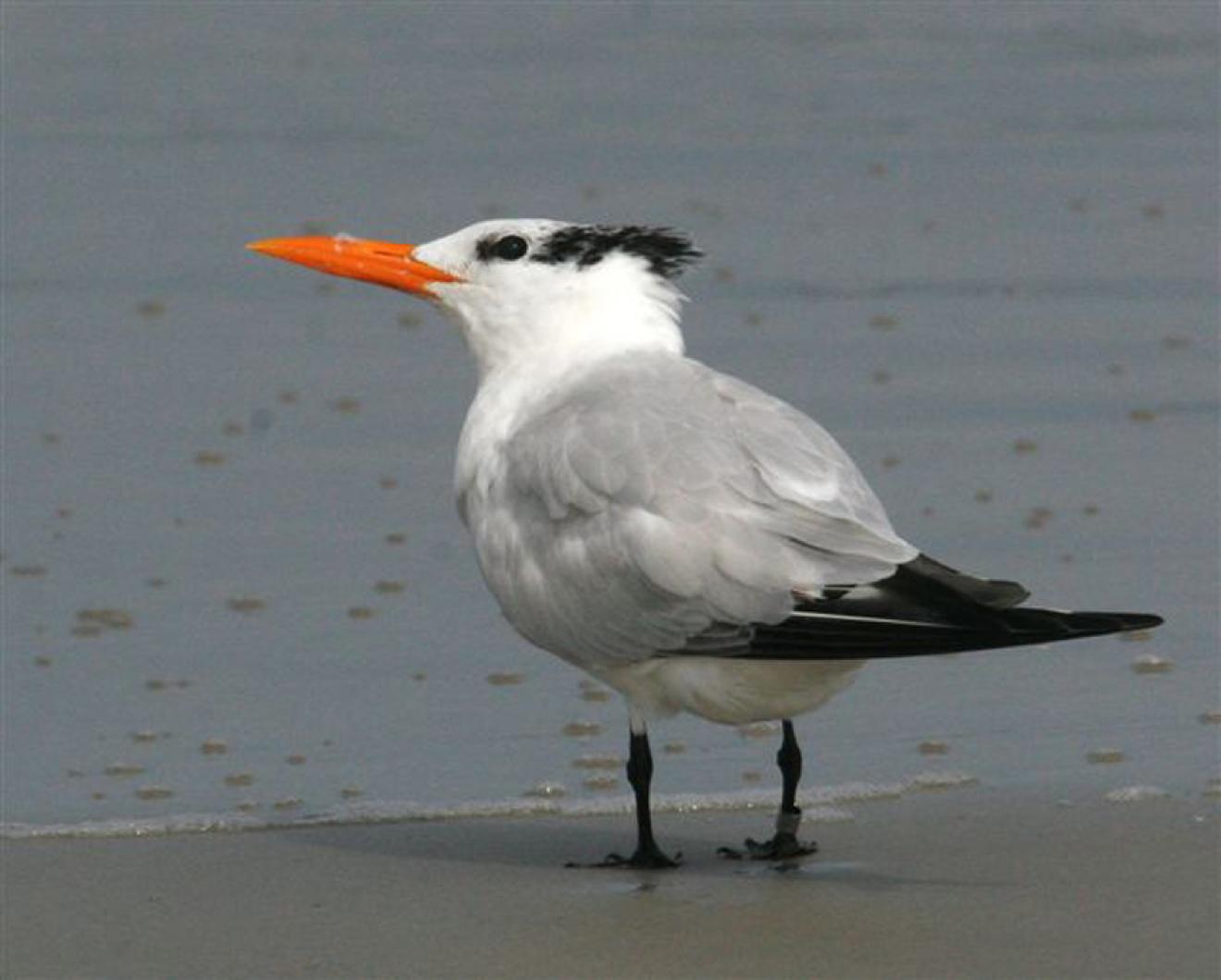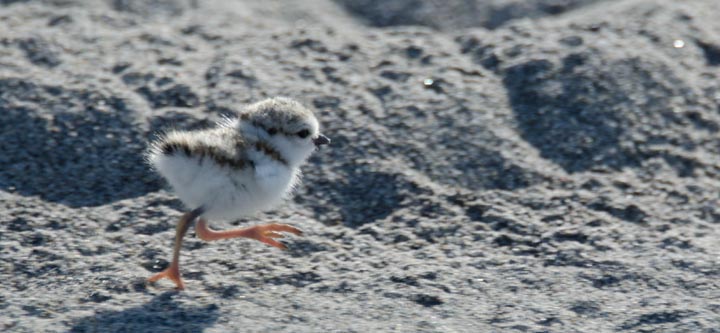All of us have been impressed by the birds that have shown up at the old jetties at Harthaven this spring. The latest highlight is Alex Greene’s royal tern on June 8. This species now occurs regularly on the Vineyard in the late summer, but it is unusual in the spring. Another unusual spring tern is the black tern that Pete Gilmore found there on May 30, when he was searching for the sandwich tern that Alex had seen.
My Saturday morning guided birding tour found both the royal and black terns on June 9, although they had both moved over to the nearby long groin at the Oak Bluffs town beach. We also observed common, lest and roseate terns at the Harthaven jetty — making five species of terns in one morning! We also observed two late purple sandpipers on the outermost rock of these jetties.
Five species of gulls have been seen there during May; they are laughing and Bonaparte’s gulls, in addition to the regular great-black-backed, herring and ring-billed gulls.
Susan Whiting and I agreed that there must be a lot of baitfish in that area to attract and keep all these fish-eating terns around. Please keep in mind, however, that these jetties are on private property; it is best to view them from the end of the seawall by Farm Pond, or by kayak if you are so inclined.
Bird Sightings
This is the season for nesting shorebirds sharing our beaches. If we do not disturb these birds, they are more likely to nest successfully now, although weather and predators can also affect their nesting success.
We are lucky to have a number of organizations working to protect these nesting shorebirds, including BiodiversityWorks, The Trustees of Reservations, Mass Audubon at Felix Neck, Martha’s Vineyard Land Bank and Sheriff’s Meadow Foundation. These organizations have just compiled a preliminary census, as they are monitoring about 51 pairs of nesting piping plovers at sites around the Island, including some places along the North Shore where they have never nested before, to our knowledge.
Plover chicks are out and about in many places, and the chicks that hatched recently have a good chance of fledging later this month or in early July. Some plovers are re-nesting after their first attempts were washed out by the extremely high tides of June 4.
American oystercatchers are also widespread and present in some new places around the Island. As they nest earlier than do the plovers, the successful early nesters have fledged their young already. Page Rogers photographed some full-grown fledglings this week; they can be told from the adults by their fresher, crisper plumage and a two-toned red and black bill. The adults will stay with their fledglings for another month or two while the young learn how to forage for themselves.
Multiple observers report large flocks of terns foraging in Vineyard Sound. These will be mostly common and roseate terns; the latter is a federally endangered species that has about half the entire North Atlantic population nesting in Buzzard’s Bay (the other half nests in and around Long Island Sound). Here they frequently forage along the north shore.
Different observers have reported a lot of willets in and around Sengekontacket Pond this week. They are the size of an oystercatcher but are much drabber. Their loud pil-wil-willet call is easily distinguished from the oystercatcher’s raucous wheep.
Chris Kennedy reports that two black skimmers are present but not nesting on Norton Point Beach. Jeff Bernier photographed one of them foraging on Katama Bay on June 11; what a great sight it is to see them dragging their lower beak through the water as they fly along, snapping up the little fish and other critters that have the misfortune of getting caught.
Alex Greene has had a busy week, finding 22 common eiders, three surf scoters and a white-winged scoter all lingering — they should be farther north at this time of the year — at Gay Head Point on June 11. His highlights from the tidal flats at Sarson’s Island on June 10 include one snowy egret, three short-billed dowitchers and three red knots.
The chickadees in Matt Pelikan’s yard have fledged their young. This noisy fledgling has been staying near the house, which is driving their indoor cat totally nuts.
Lingering shorebirds at Little Beach include a white-rumped sandpiper and a dozen ruddy turnstones on June 7, Luanne Johnson reports. That same day she also heard a bobwhite calling at Watcha Pond, and she has had one calling near her house on Lambert’s Cove Road.
There are lots of birds around, so please get out looking for them and be sure to report your bird sightings to the Martha’s Vineyard bird hotline at 508-645-2913 or e-mail birds@mvgazette.com.
Robert Culbert leads guided birding tours and is an ecological consultant living in Vineyard Haven





Comments
Comment policy »